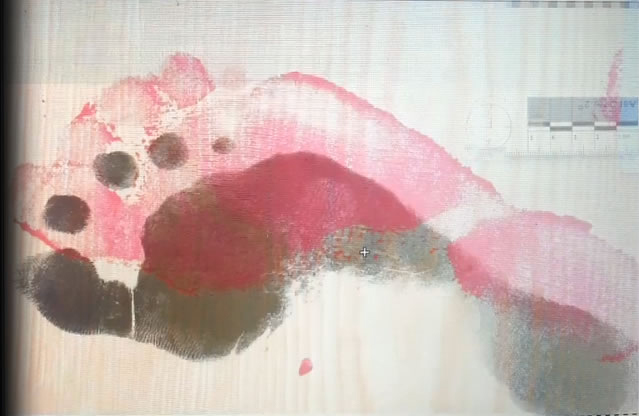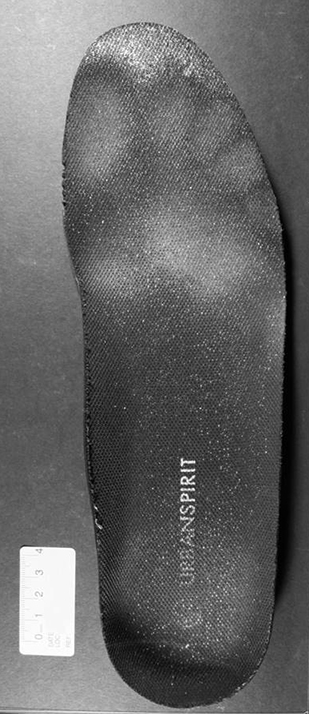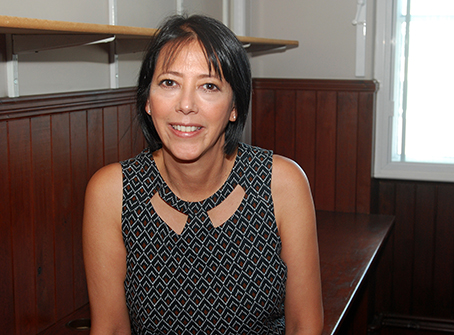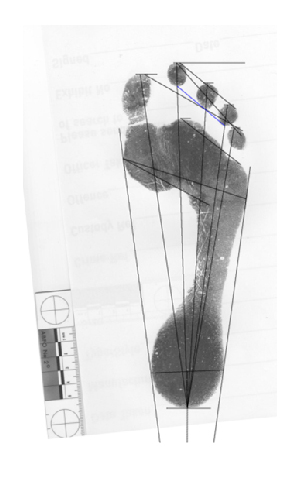Forensic podiatrist develops a unique footprint measurement tool

Mon, 12 Sep 2016 14:37:00 BST
“…unlike fingerprints, footmarks are not – statistically speaking – unique, and there are many variables that have to be taken into account by a forensic podiatrist...”
 FOOTMARKS at a crime scene provide evidence that can be as crucial as fingerprints and DNA in catching and convicting culprits. But exceptional expertise is required for it to be interpreted correctly and then stand up in court. This is the realm of forensic podiatry – taught to a high level at the University of Huddersfield.
FOOTMARKS at a crime scene provide evidence that can be as crucial as fingerprints and DNA in catching and convicting culprits. But exceptional expertise is required for it to be interpreted correctly and then stand up in court. This is the realm of forensic podiatry – taught to a high level at the University of Huddersfield.
It is the only UK university that offers a Master’s course in the subject, led by one of the world leaders in the discipline, Professor Wesley Vernon. Now, it has a Senior Lecturer whose own research has led to the development of an advanced new system of footprint measurement at crime scenes.
 It has been dubbed the Reel Method and is beginning to be employed by forensic podiatrists and disseminated in specialist publications. It takes its name from the University of Huddersfield’s Dr Sarah Reel (pictured left), who developed the technique during her PhD studies, for a thesis titled Development and evaluation of a valid and reliable footprint measurement approach in forensic identification.
It has been dubbed the Reel Method and is beginning to be employed by forensic podiatrists and disseminated in specialist publications. It takes its name from the University of Huddersfield’s Dr Sarah Reel (pictured left), who developed the technique during her PhD studies, for a thesis titled Development and evaluation of a valid and reliable footprint measurement approach in forensic identification.
“Footprints are measured for all sorts of purposes, such as orthopaedic. But in forensic science it is even more important that you get the measurements right and that everybody is measuring footprints to the same standard,” said Dr Reel, explaining the genesis of her project.
She realised that forensic podiatrists were using a wide range of different measurement techniques. Dr Reel reviewed the various methods, identified the best elements and developed ways of using modern technology.
As part of her research she used an inkless paper system to collect static and dynamic footprints from more than 60 volunteers. The footprints were digitised and their widths, lengths and angles were measured using freely available software.
Making her mark
 The result is a valid and reliable approach to footprint measurement, said Dr Reel, who has therefore made a key contribution to a forensic discipline that has fascinated her since 1986, when she was a newly-qualified podiatrist working for the NHS.
The result is a valid and reliable approach to footprint measurement, said Dr Reel, who has therefore made a key contribution to a forensic discipline that has fascinated her since 1986, when she was a newly-qualified podiatrist working for the NHS.
She was contacted by police who asked for help in identifying a body found in a canal, where it had been submerged for a long time but an appliance attached to one of the cadaver’s feet was a possible means of identification.
“Shortly after that, I was burgled and the perpetrator left a very clear shoeprint on the back door where they had gained entry,” said Dr Reel. “Not only could you make out the size and make of the trainer that had made the mark on the door, but I could also see that there was a distinct area of wear on the outsole print, which would have coincided with a particular joint of the foot. This made me wonder if my burglar had a certain pathology or problem of the foot that could relate to the shoeprint.”
She decided to add forensic expertise to her general podiatry qualifications and she was mentored by Professor Vernon, shadowing him on many high-profile cases including a triple murder in Australia. Eventually, she acquired her PhD and is now being consulted in her own right as a forensic podiatrist, usually being supplied with digital images of footmarks from crime scenes and carrying out detailed analysis for the investigators.
It is an exacting discipline because, unlike fingerprints, footmarks are not – statistically speaking – unique, and there are many variables that have to be taken into account by a forensic podiatrist.
“The main thing that people don’t appreciate is that your footprint can vary depending on what you’re doing. For a male footprint, there is an average of 18mm difference between their standing footprint and their walking footprint.”
Dr Reel combined her forensic interests with an NHS career as a clinical podiatrist before moving into lecturing, with her University of Huddersfield appointment earlier in 2016. She teaches on the Forensic Podiatry MSc and also the Podiatry BSc course.
“Podiatry represents a fabulous opportunity to study for a professional career that is widely diverse and interesting”, she said. “It is one of the most varied professions that makes a real difference in people’s lives. Podiatrists deal with sports injuries and mobility issues in children as well as adults, by administering preventative, curative and surgical procedures.
“It is wonderful to diagnose and treat people who are suffering with lower limb complaints and see virtually instant results as their pain is relieved through podiatry treatment.”







